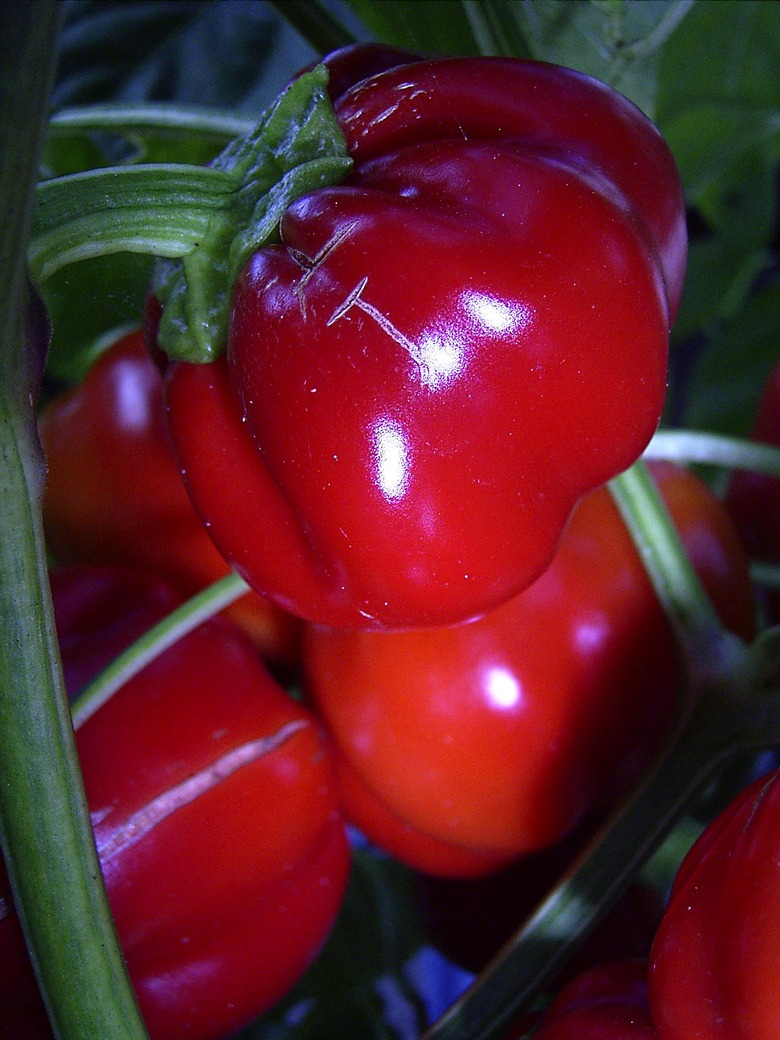How Much Water Do Bell Peppers Need
Things Needed
- Watering can
- Thin wooden dowel
- Mulch
Tip
To keep from over-watering the bell peppers, fill the watering can only halfway. You can always refill the can if the plants need more, but using a half-full can makes it far more difficult to accidentally give the bell peppers too much water.
When it comes to water intake, bell peppers can be delicate. If the pepper plants do not get enough water, the bell peppers could rot on the vine or become very bitter. If bell pepper plants are sitting in soggy soil, they may also fail to produce edible vegetables. While there is no set daily amount of water bell pepper plants should receive, it's fairly simple to regulate their intake by monitoring the soil moisture and watering the plants on a schedule.
Seedlings
Step 1
Water the delicate bell pepper seedlings indirectly before they are transplanted into their larger pots or the ground. The seedlings should be sprouted in small containers that are sitting in a large trough. Fill the trough with about 1/2 inch of water once daily.
- When it comes to water intake, bell peppers can be delicate.
- If the pepper plants do not get enough water, the bell peppers could rot on the vine or become very bitter.
Step 2
Allow the seedlings to drink the water for about five minutes, then remove them from the trough and discard the water. If the plants become soaked, the excess moisture can kill the roots.
Step 3
Repeat this watering process daily until the seedlings are large enough to transplant.
Adult Plants
Step 1
Water adult bell pepper plants lightly, but consistently. The plants need to be watered daily at about the same time. Choose a time in the morning to water the bell pepper plants, if possible, as the sunlight will dry any water that lands on the leaves and vegetables. This will help keep the plants from rotting.
- Allow the seedlings to drink the water for about five minutes, then remove them from the trough and discard the water.
Step 2
Fill a watering can about halfway with cool water and water the plant until the soil looks moist, but not flooded. There should be no standing water on the surface of the dirt. Depending on the size of the planting area, this process should require anywhere from 1/4 to 1/2 of a large can of water each day.
Step 3
Wait about 10 minutes, then check to see if any water has run into the saucer beneath the pot (if applicable). Empty out the saucer; bell pepper plants should never be allowed to sit in water, as that can lead to over-moisturized soil.
Step 4
Check the soil a few times every day, especially on very hot or sunny days. The bell pepper plant's soil needs to be damp at all times. The easiest way to check for soil moisture is to slide the end of a thin wooden dowel about an inch into the dirt. Remove it, then check the tip. If it is dry and free of soil residue, give the bell peppers a bit more water.
- Fill a watering can about halfway with cool water and water the plant until the soil looks moist, but not flooded.
- Wait about 10 minutes, then check to see if any water has run into the saucer beneath the pot (if applicable).
Step 5
Maintain the bell pepper plant's soil moisture by surrounding the base of the plant with a layer of mulch. The much will lock in the correct level of water, warm the soil and keep the plant from becoming dehydrated on hot or windy days.
